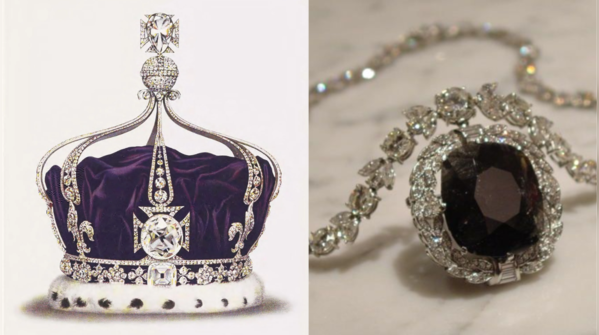Koh-i-Noor to The Black Orlov: 5 cursed gemstones with haunting histories

Titillating tales held by popular gemstones
The world of diamonds, emeralds, and rubies has been more than just precious stones. For centuries, these gemstones were the pride and joy of empires, proving the worth and power of their land. Holding more than meagre glitz and fame, some also had a mysterious fate that left an intriguing sense of misfortune at the end. These historic tales and myths can be notorious yet haunting in nature, making the journey of these 5 jewels more interesting than ever.

The Koh-i-Noor Diamond — Gentlemen, Take Notice
The 105.6-carat Koh-i-Noor diamond is believed to have been extracted from the Kollur mine in Golconda, India. It means the ‘mountain of light’ and first appeared in the memoirs of Babur, the founder of the Mughal Empire in India. The diamond was then stolen from the Raja of Malwa, and over the next few years, it traded hands among various Persian, Afghan, Mongolian, Sikh, and Hindu rulers, who fought battles to own it. According to folklore, it was believed that ‘he who owns the diamond will own the world but will also know its misfortunes.’ In 1849, it was acquired by the British and was given to Queen Victoria in 1850. Currently, it sits in the Tower of London Jewel House and is owned by the British monarchy.
(Image Credits: Pinterest)

Black Prince’s Ruby — The Blood-Red Imposter
This precious gemstone is not a ruby at all but is a large spinel, i.e., a hard, glassy mineral that crystallised into various shades. They are less expensive than rubies, which is why the Black Prince’s ruby is known as ‘the great impostor’. It was mined from Badakshan (present-day Tajikistan) in the 14th century and belonged to the Moorish Kingdom of Granada. It was owned by Edward of Woodstock, who was called "the Black Prince.” In 1415, King Henry V attained it and had it set in his battle helmet along with real rubies. It was then passed to the British royalty until King Charles I was beheaded for treason in 1649, and the stone was stolen. Charles II, however, bought it back from an unknown party, and since 1671 it has been sealed in the Tower of London.
(Image Credits: Pinterest)

The Delhi Purple Sapphire — The “Cursed Quartz”
This gemstone is another impostor, as it is not a sapphire but an amethyst. It was stolen by a British soldier from the Temple of Indra, the Hindu god of war and weather, during the Indian Mutiny in 1857, in Kanpur. It was brought to England by Colonel W. Ferris, whose family gradually suffered many financial and health woes. In 1890, it was claimed that he who owned it immediately started having bad luck after receiving it. The next owner, Heron-Allen, warned that the stone is stained with blood and has a curse and was donated to London’s Natural History Museum in 1943 by her daughter. It is now on permanent display with a letter cautioning future owners against directly handling it.
(Image Credits: Pinterest)

The Black Orlov — The Eye of Brahma Diamond
This cushion-cut 67.50-carat diamond was found in the 1800s and is of gunmetal grey colour. According to some folklore, it was stolen from a shrine of Lord Brahma in Southern India and is a cursed gem. It was acquired by the Russian princess Nadezhda Orlov, who soon committed suicide, with Charles F. Winson buying it in 1947. Since then, it has been purchased and resold by several private owners and has been displayed at several museums across the globe, including London's Natural History Museum and the American Museum of Natural History in New York City.
(Image Credits: Pinterest)

The Sancy Diamond — A Colourful History
The pear-shaped Sancy diamond has a pale yellow tint and is believed to have originated in India. The French Ambassador to Turkey bought the diamond in 1570, which was later rented to Henry III of France in 1589. In 1604, Sancy sold the diamond to James I of England, and during the French Revolution, it was raided and stolen from the treasury along with the Regent and Hope diamonds. It then resurfaced in 1828 and was bought by a Russian prince. Passed on to his family, a Bombay merchant eventually bought the gem in 1867 and sold it to William Waldorf Astor in 1906. After exploring the world, it stayed with his family till 1978, when it was sold to the Louvre Museum in Paris and is now on exhibit at the museum’s Apollo section.
(Image Credits: Pinterest)








